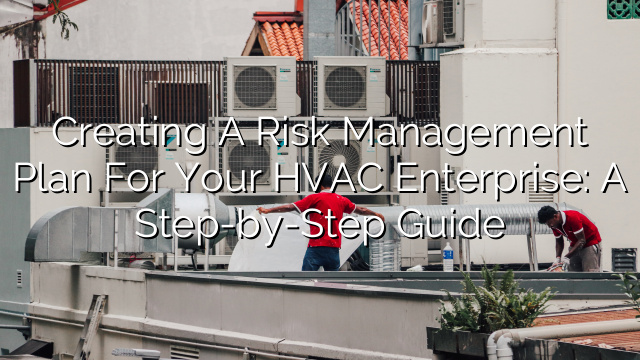Covering Your Bases: Common Gaps in HVAC Enterprise Insurance
As a business owner in the heating, ventilation, and air conditioning (HVAC) industry, you know the importance of having the right insurance coverage. From liability protection to property damage coverage, insurance is essential for safeguarding your business. However, even with a standard insurance policy in place, there may be gaps that leave your HVAC enterprise vulnerable. Identifying these gaps and addressing them is crucial for ensuring comprehensive protection against potential risks. In this blog post, we will explore some common gaps in HVAC enterprise insurance and explain how to cover your bases.
The Risks of Inadequate Insurance Coverage
Before diving into the gaps in HVAC enterprise insurance, it’s important to understand the potential risks associated with inadequate coverage. Without sufficient insurance, your business could face significant financial losses in the event of accidents, damages, or lawsuits. For instance, if a customer were to suffer an injury while your technicians are working on their property, you could be held liable for medical expenses, legal fees, and potential settlements or judgments. Similarly, if your equipment or tools were to be damaged or stolen, the cost of replacing them could be burdensome. By addressing the gaps in your insurance coverage, you can mitigate these risks and protect your HVAC enterprise.
Common Gaps in HVAC Enterprise Insurance
1. Commercial Auto Insurance: If your HVAC enterprise owns and operates vehicles for business purposes, standard auto insurance may not provide sufficient coverage. Commercial auto insurance is specifically designed to protect your business from liability and property damage arising from accidents involving company-owned vehicles.
2. Worker’s Compensation Insurance: Worker’s compensation insurance is essential for covering medical expenses and lost wages in the event of work-related injuries or illnesses suffered by your employees. This type of insurance is required by law in most states.
3. Environmental Liability Insurance: HVAC enterprises often work with hazardous materials such as refrigerants, which can pose environmental risks if mishandled. Environmental liability insurance provides coverage for any accidental releases or contamination caused by your business activities.
4. Errors and Omissions Insurance: Also known as professional liability insurance, errors and omissions insurance protects your HVAC enterprise against claims of negligence, errors, or omissions in your professional services. This is particularly important if your business offers design or consulting services.
5. Cyber Insurance: With the growing threat of cyber attacks, safeguarding your business against data breaches and cyber incidents is crucial. Cyber insurance provides coverage for the expenses associated with data recovery, customer notifications, and potential liability claims.
How to Address the Gaps
To cover the gaps in your HVAC enterprise insurance, it is important to assess your business needs and consult with an experienced insurance agent or broker. They can help you customize your insurance policy to include the necessary coverage for your specific risks. Here are some steps to take:
- 1. Conduct a thorough risk assessment of your HVAC enterprise to identify potential vulnerabilities.
- 2. Review your current insurance policy to understand the coverage limitations and exclusions.
- 3. Consult with an insurance agent or broker who specializes in HVAC industry insurance.
- 4. Discuss your business needs and risks to determine the appropriate coverage for your enterprise.
- 5. Customize your insurance policy by adding endorsements or purchasing standalone policies to fill the gaps.
- 6. Regularly review and update your insurance coverage as your business grows or changes.
FAQs
- 1. How much does HVAC enterprise insurance cost?
- The cost of HVAC enterprise insurance varies depending on various factors, such as the size of your business, the services you provide, your location, and your claims history. It is best to request quotes from multiple insurance providers to compare prices and coverage options.
- 2. Are there any additional coverages recommended for HVAC enterprises?
- In addition to the common gaps mentioned earlier, HVAC enterprises may also benefit from equipment breakdown insurance, business interruption insurance, and inland marine insurance. These coverages can provide further protection against specific risks faced by HVAC businesses.
- 3. Can I rely solely on a general liability insurance policy for my HVAC enterprise?
- While general liability insurance is important, it may not provide comprehensive coverage for all the risks faced by HVAC enterprises. It is recommended to tailor your insurance coverage to address the specific risks and needs of your business.
- 4. Is professional liability insurance necessary for HVAC enterprises?
- Professional liability insurance, also known as errors and omissions insurance, is highly recommended for HVAC enterprises offering design or consulting services. It provides coverage for claims related to professional negligence, errors, or omissions.
- 5. How often should I review my insurance coverage?
- It is advisable to review your insurance coverage annually or whenever significant changes occur in your business. Regular reviews ensure that your coverage remains adequate and up-to-date.






